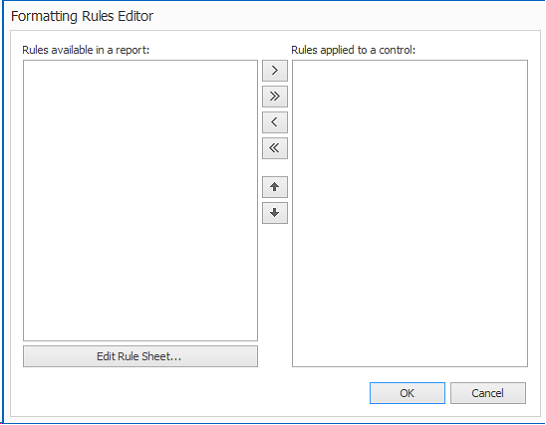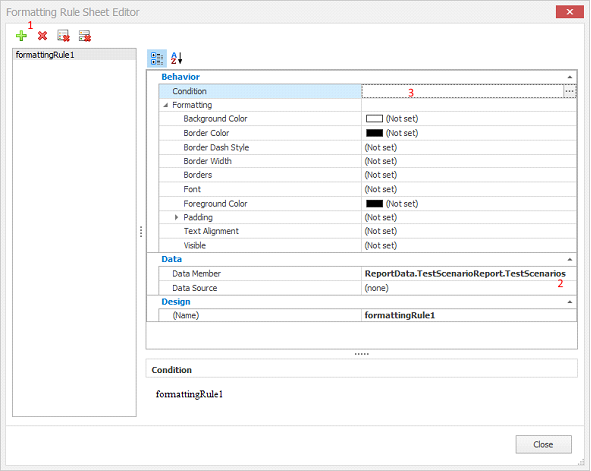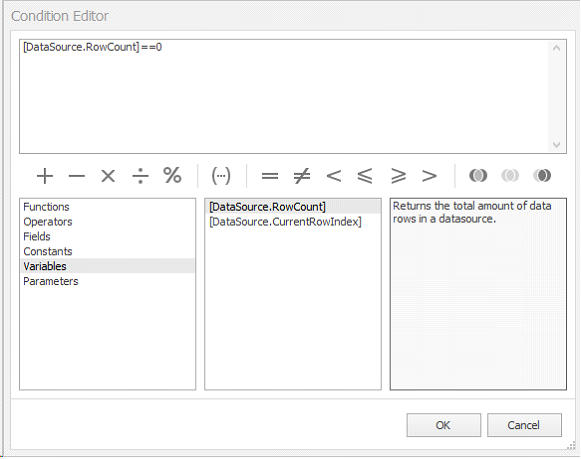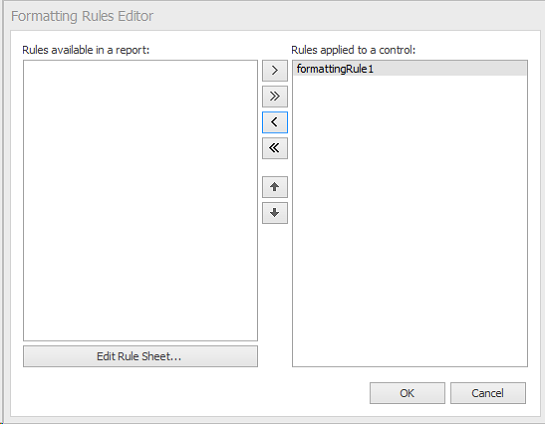Remove empty elements
In aqua reports, you can iterate on different elements. It may be that there is a scenario where all requirements are iterated. So, you can have a header and all requirements should be listed. But there may be a special case where no requirements are listed in the reports. So, you want show those elements. In the following, you will receive information about how to solve this problem by setting the elements to invisible.
To do so, open a band as shown in the following screen.

A context menu opens. Here, click on Formatting Rules. A new windows is opened, click on Edit Rules. Here, you can create a new rule.



Confirm by clicking on OK, click on Close and add rule to band.

That's all!
Related Articles
Remove empty items
In aqua reports, you can iterate on different elements. It may be that there is a scenario where all requirements are iterated. So, you can have a header and all requirements should be listed. But there may be a special case where no requirements are ...Basic Report Elements
Layout Designer The layout designer features a drag and drop interface where you can add labels or pictures to your report or manipulate the design properties of elements. These labels can be edited and the properties can also be changed using ...Basic Report Elements
Layout Designer The layout designer features a drag and drop interface where you can add labels or pictures to your report or manipulate the design properties of items. These labels can be edited and the properties can also be changed using scripts, ...Versioning (Rich Client)
aqua offers the user the option to manage versions of all elements such as requirements, defects, test cases and test scenarios. This allows you to store auditable requirements, test cases and defects. It enables you to work with different versions ...Extension of the IDs to more than 6 digits
Each item automatically receives a unique ID (across all projects) after creation, which consists of the prefix RQ (Requirement), TC (Test Case), TS (Test Scenario), or DF (Defect) and a 6-digit number with leading zeros. The IDs are automatically ...